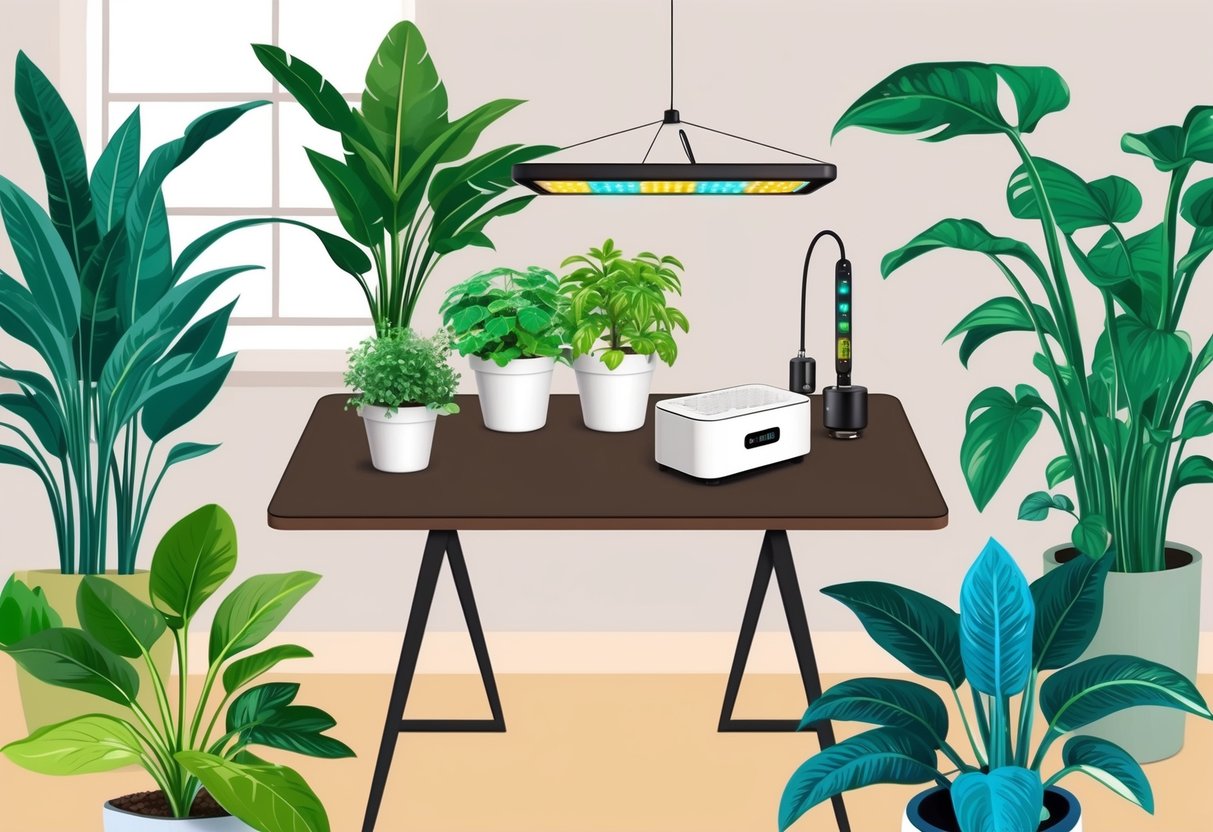
Smart Watering Systems
Automating garden watering has become much easier and more precise with new technology. These advancements help gardeners manage schedules, reduce water waste, and ensure healthier plant growth with minimal manual effort.
Smart Irrigation Systems
Smart irrigation systems integrate Wi-Fi connectivity and weather-based automation to deliver water exactly when it’s needed. Popular options like the Rachio 3 enable users to control watering schedules with their smartphones, even when away from home.
These devices use real-time weather updates to adjust watering frequency, reducing unnecessary water use during rain or cooler weather. Some models connect to popular smart home ecosystems, letting gardeners create custom routines based on soil type, plant species, or seasonal requirements.
Water usage reports help homeowners track efficiency, making maintenance both convenient and data-driven. Leading models such as the Rachio 3 Smart Irrigation Controller and Orbit B-hyve Smart Hose Faucet Timer can help reduce water bills and keep plants healthy.
Drip Irrigation Solutions
Drip irrigation delivers water directly to plant roots through a system of tubes and emitters, minimizing evaporation and runoff. Smart controllers can automate these drip systems, offering precise control for gardens, raised beds, and containers.
The Gardena Micro-Drip System is one such solution, allowing for customization to the layout and size of the planting area. These systems are particularly effective in conserving water, as they only supply what each plant requires.
They can be integrated with timers, soil moisture sensors, and app-based controls for effortless daily operation. With options like the Gardena Micro-Drip System, users gain consistent moisture management and improved plant health without daily intervention.
Intelligent Lighting for Indoor and Outdoor Gardens
Effective lighting strategies play a critical role in optimizing plant growth and ensuring healthier yields. Both direct sunlight and artificial grow lights can support robust indoor gardens, but the best results come from understanding how to use these resources efficiently in different environments.
Optimizing Direct Sunlight
Plants thrive when they receive the right amount and quality of natural light. Outdoor gardens often benefit from full-spectrum sunlight, which supports photosynthesis and allows vegetables, herbs, and flowers to develop properly.
For indoor gardening, window placement matters. South-facing windows typically offer the most light in the northern hemisphere.
It helps to rotate pots or move plants closer to windows during winter when daylight hours are shorter. Key tips for maximizing sunlight exposure:
- Use reflective surfaces, such as mirrors or white walls, to direct more light toward plants.
- Clean windows regularly to ensure no dust or grime blocks natural rays.
- Track how the sun changes positions throughout the day and season, and adjust plant positions as needed.
Plants that display thin stems, pale leaves, or slow growth might not be receiving sufficient light and may need a supplement.
Best Grow Lights for Indoor Gardening
Grow lights are essential for maintaining healthy plants indoors, especially in areas where sunlight is limited. Modern LED grow lights offer adjustable intensity and spectrum to replicate natural sunlight and can outperform regular household bulbs for plant maintenance.
Smart indoor garden systems often feature programmable LED grow lights with built-in timers, reducing manual effort and ensuring consistent growth cycles. Some smart gardening systems even offer intelligent lighting solutions that surpass the stability of natural light during critical plant development phases.
When selecting a grow light, consider:
- Full-spectrum LEDs for all growth stages.
- Adjustable timers for simulating day and night cycles.
- Energy consumption for efficient operation.
A table summarizing grow light features:
| Feature | Benefit |
|---|---|
| Spectrum Control | Customizes for plant type |
| Timer Functionality | Automates lighting schedules |
| Cool Operation | Prevents heat stress on plants |
| Energy Efficiency | Reduces electricity costs |
Reliable lighting solutions make indoor garden maintenance less demanding and can help plants flourish, even in environments with limited sunlight.